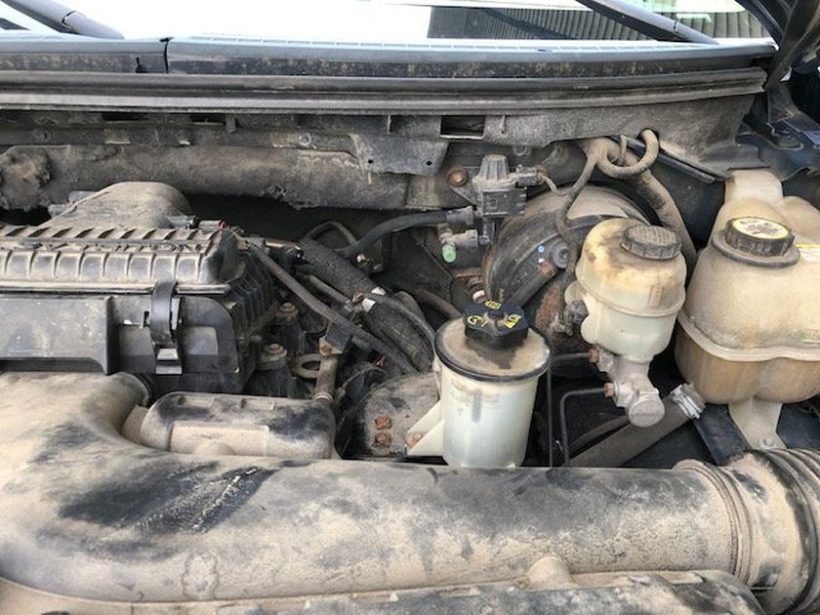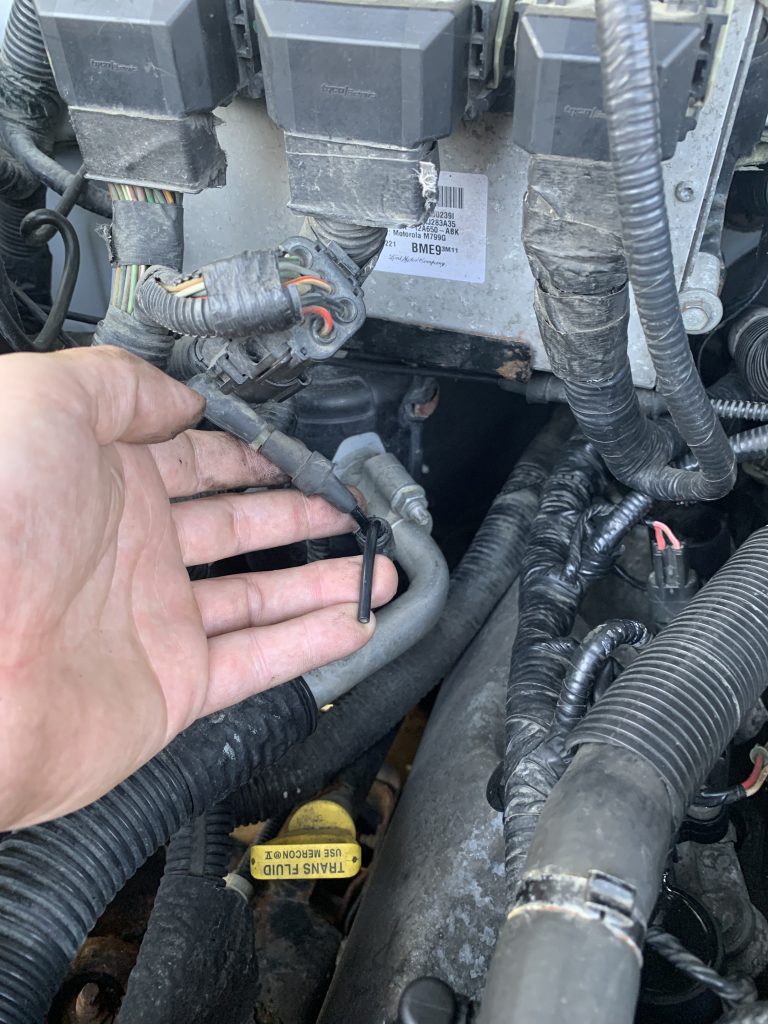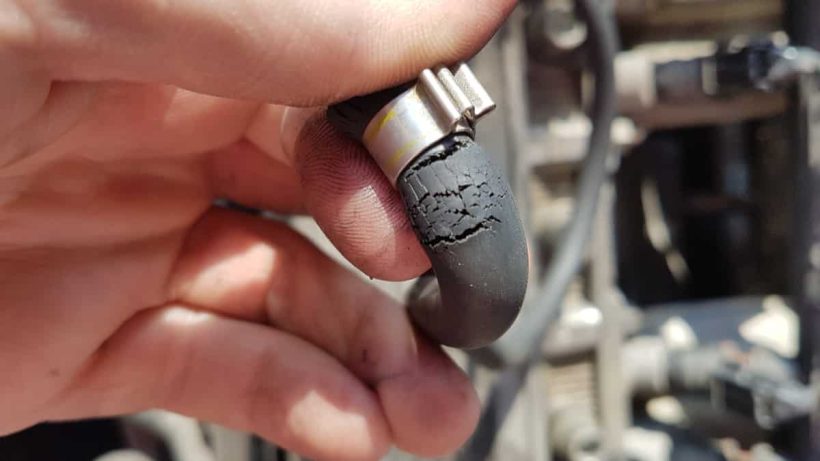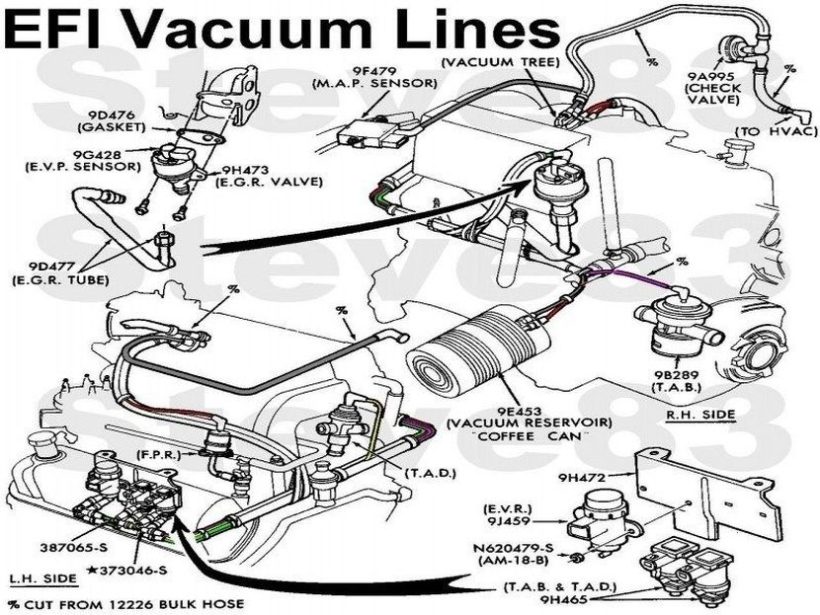Parts of a Triton Ford 5.4 Vacuum Hose

A vacuum hose is essential for a Triton Ford 5.Vacuum cleaner. It is responsible for transferring the suction force from the motor to the dustbin. This guide will provide a diagram of the parts of a vacuum hose and explain their function.
The first part of the vacuum hose is the inlet tube. It is located at the top of the vacuum cleaner and it allows dirt, dust, and other debris to enter the vacuum cleaner. The inlet tube receives dirt, dust, and other debris from the house or workplace.
The second part of the vacuum hose is the outlet tube. It is located at the bottom of the vacuum cleaner and it directs suction force from the motor to the dustbin. The outlet tube sends dirt, dust, and other debris to where it needs to be cleaned – usually outside of your home or workplace.
The third part of the vacuum hose is called the discharge hose. It connects to the dustbin on one end and it connects to your house or workplace on the other end. The discharge hose helps to remove dirt, dust, and other debris from your home or workplace.
How to install a Triton Ford 5.4 Vacuum Hose

If you are looking to install a Triton Ford 5.Vacuum Hose, there are a few things that you will need to do. This guide will walk you through the steps necessary to install your hose.
1. Remove the cover on the vacuum cleaner housing
2. Remove the dirt cup and hose from the vacuum cleaner
3. Mark the position of the new dirt cup on the housing and remove it
4. Align the new dirt cup with the marked hole in the housing and screw it in place
5. Replace the cover on the vacuum cleaner housing
Maintenance and troubleshooting for your Triton Ford 5.4 Vacuum Hose
In this blog post, we will discuss some common maintenance and troubleshooting issues with Triton Ford 5.Vacuum Hose.
If you are having trouble with your 5.Vacuum Hose, please follow these steps:
1) Check the suction power: first, make sure that the suction power is working properly by checking the level of suction on the hose. If there is low or no suction, then the problem may be with the hose itself. To test the suction power, use a vacuum cleaner to try to suck up a small amount of water or dust. If the vacuum cleaner cannot draw up enough water or dust, then the suction power may be low.
2) Make sure that the hose is connected correctly: next, make sure that the hose is connected to the vacuum cleaner in a correct way. Verify that both ends of the hose are firmly connected to the vacuum cleaner and that there is no obstruction between them. If there is an obstruction, then air may be trapped inside the hose and cause low or no suction.
3) Check for clogs: if there are clogs in the hose, then they may cause low or no suction
How many types of vacuum hoses?
Triton Ford offers a variety of vacuum hose options to meet the needs of each customer. There are three types of vacuum hoses: straight, elbow, and spiral. Each type has its own advantages and disadvantages.
Straight vacuum hoses are the simplest type and are the most common. They have one end that is connected to the pump and the other end is connected to the hose reel. This type of vacuum hose is good for simple applications, like cleaning gutters or removing dust from furniture.
Elbow vacuum hoses have two ends: one end is connected to the pump and the other end is connected to the hose reel. This allows you to reach areas that are difficult to access with a straight vacuum hose. Elbow vacuum hoses are also good for cleaning tight spaces or under furniture.
Spiral vacuum hoses have a U-shaped tube. The U-shape means that you can reach more areas with this type of vacuum hose than with a straight or an elbow vacuum hose. Spiral vacuum hoses are especially good for cleaning car interiors or floors.
How does a vacuum hose work?
A vacuum hose is a type of plumbing that uses a pump to create a partial or complete vacuum. This vacuum helps to move fluids, gas, and other substances through the hose.
Vacuum hoses are used in many different applications, including car repair. When a car breaks down, the technician may need to remove debris and fluid from the engine bay. A vacuum hose can help to remove these materials quickly and efficiently.
A vacuum hose is made up of several sections. The first section is the pump, which creates the vacuum. The second section is the hose, which connects the pump to the object being drained. The third section is the discharge valve, which allows the technician to release the vacuum.
By using a vacuum hose, technicians can quickly and easily remove debris and fluid from the engine bay. This helps to keep the car repair process streamlined and efficient.
How do I know if my vacuum hose is bad?
If you are experiencing problems with your vacuum cleaner, the first thing you should do is check the vacuum hose. If the hose looks damaged or seems to be blocked, it may be time to replace it. Here is a diagram that shows how to check for a bad vacuum hose.
To check for a bad vacuum hose, first turn on the vacuum cleaner and connect the vacuum cleaner to the wall outlet. Next, disconnect the power cord from the wall outlet and remove the dustbin. Finally, insert a finger into the end of the vacuum cleaner’s hose and turn it slowly in a circle. If there is resistance when you turn the hose, it may be time to replace it.
Can you drive with a broken vacuum hose?

If you’ve ever driven your car with a broken vacuum hose, you know that it can be dangerous. A broken vacuum hose can cause the car to lose power and become difficult to control.
If your car loses power, it’s important to immediately stop and remove the broken vacuum hose. Doing so will help to avoid any further damage and ensure that you can drive safely.
If you’re concerned about your car’s vacuum hose, don’t hesitate to get in touch with Triton Ford. Our team of experts can diagnose the issue and provide you with a replacement hose free of charge. We hope this guide has helped to reassure you that a broken vacuum hose is not a safety hazard.
Where is the vacuum leak on a Ford f150?
There are many things that can go wrong with a Ford f150, but one of the most common problems is a vacuum leak. A vacuum leak can cause a lot of problems with the engine, transmission, and brakes.
Here is a diagram that shows where the vacuum leak on a Ford f150 might be. If you are experiencing any of the symptoms described in the diagram, it is important to schedule an appointment with your local Ford dealer to have the problem diagnosed and fixed.
Where does the vacuum hose connect?
The vacuum hose on a Ford Triton car connects to the air intake on the engine. The purpose of this hose is to pull air into the engine so that it can be burned. The hose is located near the exhaust pipe on the side of the car.
Can you replace a vacuum hose?
Yes, you can replace a vacuum hose on your Triton Ford. The vacuum hose is a small, thin tube that connects your vacuum cleaner to the vacuum cleaner outlet. It’s important to keep your vacuum cleaner working properly so you don’t lose suction. If the vacuum hose becomes damaged, it can cause problems with your vacuum cleaner.
To replace the vacuum hose on your Triton Ford, follow these steps:
1. Turn off the power to the vacuum cleaner and unplug it from the wall outlet.
2. Remove the cover on the front of the machine.
3. locate the hose near the bottom of the machine. It will be connected to a metal pipe.
4. Unplug the old hose from the metal pipe and plug in the new hose. be sure to tighten the cap on the end of the new hose to ensure a good seal.
Precautions When Installing Car Vacuum Hose
When installing a car vacuum hose, make sure the new one matches the car’s air pressure. Use a tourniquet to make the installation faster and easier. Apply heat to make the hose more pliable as Aspiring Handyman suggests.

